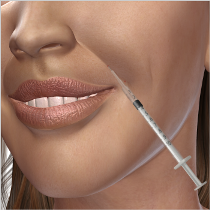The Procedure
Allergy test.
Depending on the type of collagen you and your plastic surgeon choose to use, an allergy test may be required. It's usually done a month before your first set of injections. A tiny amount will be injected and you'll be asked to watch that spot for signs of swelling, redness, itching or anything else unusual. Call your doctor if you see any signs of a reaction.
When you're ready to start injections, here's what happens:
Assess.
First, your surgeon will listen to your desired results and then evaluate your facial appearance and skin tone, examining the areas of your face to be augmented with an injectable dermal filler.
Map a strategy.
Next, the surgeon will mark strategic points on your face as guides to the appropriate collagen injections sites for the filler.
Clean the area.
You injection sites will be cleansed with an antibacterial agent. Then a topical anesthetic will be used to numb the area, particularly if you are sensitive to injections. But in some cases, the collagen filler includes an anesthetic in the mixture.
Inject.
The actual injections will take just a few minutes total, and just seconds per site.

Clean up and ice.
The marks will be washed away and you will be offered an ice pack to reduce any minor and temporary discomfort. At this point you may apply makeup, but be careful not to apply pressure to the treated areas. Doing so may result in movement of the dermal filler.
A special note about scars and deep lines. These areas will often require multiple injections to achieve your desired results. If a deeper injection is required, you'll be offered a local anesthetic to remain comfortable. Common sites are the nasolabial folds and marionette lines, or to enhance fullness in the cheeks.
